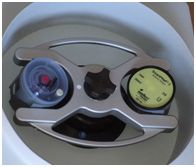Platelet-Rich Plasma (PRP)
What are Platelet-Rich Plasma Injections
PRP injections are a new medical technology used in the treatment of musculoskeletal injuries.
Platelet-rich plasma (Abbreviation: PRP) is blood plasma that has been enriched with platelets. As a concentrated source of autologous platelets, PRP contains several different growth factors and other cytokines that can stimulate healing of bone and soft tissue.
Benefits of Platelet-Rich Plasma (PRP)
Platelet-Rich Plasma (PRP) injections can help;
- Alleviate painful symptoms associated with conditions like arthritis and tendonitis
- Promote healing of tendons, and
- Delay joint replacement surgeries.
Indications for Platelet-Rich Plasma Use
Platelet-Rich Plasma (PRP) is a relatively new method of treatment for several orthopaedic conditions such as
- Muscle, ligament, and tendon injuries;
- Arthritis;
What is Platelet-Rich Plasma (PRP)
Our blood consists of a liquid component known as plasma. It also consists of three main solid components which are
- The red blood cells (RBCs),
- White blood cells (WBCs), and
- Platelets.
Platelets play an important role in forming blood clots. They consist of special proteins, known as growth factors, which help our body’s healing process.
Platelet-rich plasma or PRP is a high concentration of platelets and plasma. A normal blood specimen contains only 6% platelets, while platelet-rich plasma contains 94% of platelets and 5 to 10 times the concentration of growth factors found in normal blood, thus greater healing properties.
Platelet-Rich Plasma (PRP) Procedure

The PRP injection is usually performed in conjunction with your arthroscopic procedure.
The following process is administered while you are still under anaesthetic at the end of the procedure.
Dr Biggs will follow the process:
- Draw about 10 cc of blood from the your arm.
- Your blood is then spun in a centrifuge machine for 3 - 5 minutes to separate the platelets from the remaining blood components.
- The platelet-rich portion of your blood is then injected into your affected area.
Post-Procedural Care
The addition of the PRP injection does not change the post operative programme
The addition of the PRP injection may help minimize post-operative pain and swelling and allow for a faster rehabilitation
There is no increase in morbidity in having the PRP injection at the time of your procedure.
Risks and Complications
There are very few risks or complications associated with Platelet-Rich Plasma (PRP) Injections. Some potential risks include:
- Increased pain at the injection site
- Infection
- Damage to adjacent nerves or tissues
- Formation of scar tissue
- Calcification at the injection site







